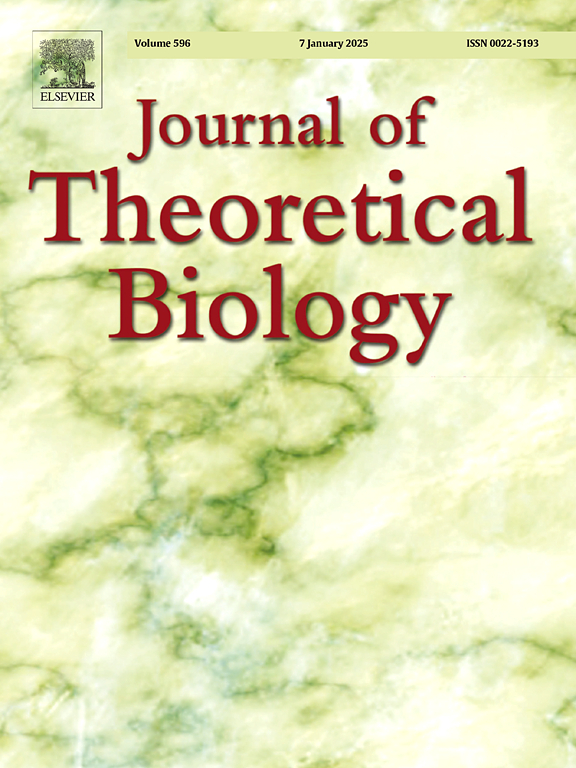用鼻内抗病毒喷雾剂预防SARS-CoV-2超级传播事件。
IF 2
4区 数学
Q2 BIOLOGY
引用次数: 0
摘要
导言:众所周知,超级传播事件会不成比例地促进流行病和大流行性病毒的向前传播。方法:我们使用确定性和随机数学模型来量化鼻内喷雾剂在一次确认的超级传播事件(2020年钻石公主号游轮上的SARS-CoV-2爆发)和一次导致广泛传播的会议活动中控制疫情的影响。结果:在钻石公主号游轮案例研究中,广泛使用预防性鼻内喷雾剂存在7-14天的机会窗口,可以显著影响避免感染的数量。如果对已知的SARS-CoV-2疫情立即作出反应,再加上检测和保持社交距离的措施,预防效果和覆盖率超过65%,可以将平均感染人数减少90%以上。在会议的案例研究中,分析表明,在没有额外的公共卫生干预措施的情况下,要在人口一级取得类似的结果,需要有更高的预防效果和覆盖率。然而,预防性使用可以将个人感染的可能性减半,并显著降低发生严重感染的可能性。结论:在已知的潜在超级传播事件中,早期使用鼻内喷雾剂可以补充隔离措施,并显着抑制SARS-CoV-2爆发,即使在覆盖率不理想的情况下也是如此。在潜在的短期超级传播事件中,鼻内喷雾剂可降低个人感染风险,但在没有其他干预措施的情况下,它们无法预防所有感染或所有后续社区传播。简单的语言总结:在封闭空间中人群密切接触的地方,冠状病毒等呼吸道病毒很容易传播。在这类活动中,可能会发生超级传播:一个人将病毒传播给许多其他参加活动的人,从而加剧疫情或大流行。我们使用数学模型来预测立即起作用的抗病毒鼻喷雾剂是否可以防止这种超级传播事件。我们发现,早期使用鼻喷雾剂可以抑制SARS-CoV-2的爆发,即使不是每个人都接受鼻喷雾剂治疗,只要人们也接受检测,并在感染后保持社交距离。在不进行隔离的会议上,仅靠鼻腔喷雾剂很难完全阻止病毒的传播。然而,在个人层面上,使用鼻喷雾剂的人感染病毒的几率较低。本文章由计算机程序翻译,如有差异,请以英文原文为准。
Preventing SARS-CoV-2 superspreading events with antiviral intranasal sprays
Introduction
Superspreading events are known to disproportionally contribute to onwards transmission of epidemic and pandemic viruses. Preventing infections in a small number of high-transmission settings is therefore an attractive public health goal.
Methods
We use deterministic and stochastic mathematical modelling to quantify the impact of intranasal sprays in containing outbreaks at a confirmed superspreading event (the 2020 SARS-CoV-2 outbreak at the Diamond Princess cruise ship) and a conference event that led to extensive transmission.
Results
In the Diamond Princess cruise ship case study, there exists a 7–14-day window of opportunity for widespread prophylactic intranasal spray usage to significantly impact the number of infections averted. Given an immediate response to a known SARS-CoV-2 outbreak, alongside testing and social distancing measures, prophylactic efficacy and coverage greater than 65% could reduce the average number of infections by over 90%. In the conference case study, in the absence of additional public health interventions, analyses suggest much higher prophylactic efficacy and coverage is required to achieve a similar outcome on a population level. However, prophylactic use can halve an individual’s probability of being infected, and significantly reduce the probability of developing a severe infection.
Conclusions
At a known potential superspreading event, early use of intranasal sprays can complement quarantining measures and significantly suppress a SARS-CoV-2 outbreak, even at suboptimal coverage. At a potential superspreading event of short duration, intranasal sprays can reduce individuals’ risk of infection, but in the absence of other interventions, they cannot prevent all infections or all onwards community transmission.
Plain language summary
Where crowds are in close contact in closed spaces, respiratory viruses like coronavirus spread easily. At such events, superspreading may occur: one person transmitting the virus to many other event-goers, fuelling the epidemic or pandemic. We used mathematical modelling to predict whether antiviral nose sprays which act immediately can prevent such superspreading events. We found that early use of nose sprays can suppress a SARS-CoV-2 outbreak, even if not everybody is treated with the nose spray, as long as people are also tested and use social distancing if infected. At a conference where people do not quarantine, it is more difficult to prevent spreading of the virus altogether with nose sprays alone. However, at an individual level, people who take the nose spray have lower chance of getting infected with the virus.
求助全文
通过发布文献求助,成功后即可免费获取论文全文。
去求助
来源期刊
CiteScore
4.20
自引率
5.00%
发文量
218
审稿时长
51 days
期刊介绍:
The Journal of Theoretical Biology is the leading forum for theoretical perspectives that give insight into biological processes. It covers a very wide range of topics and is of interest to biologists in many areas of research, including:
• Brain and Neuroscience
• Cancer Growth and Treatment
• Cell Biology
• Developmental Biology
• Ecology
• Evolution
• Immunology,
• Infectious and non-infectious Diseases,
• Mathematical, Computational, Biophysical and Statistical Modeling
• Microbiology, Molecular Biology, and Biochemistry
• Networks and Complex Systems
• Physiology
• Pharmacodynamics
• Animal Behavior and Game Theory
Acceptable papers are those that bear significant importance on the biology per se being presented, and not on the mathematical analysis. Papers that include some data or experimental material bearing on theory will be considered, including those that contain comparative study, statistical data analysis, mathematical proof, computer simulations, experiments, field observations, or even philosophical arguments, which are all methods to support or reject theoretical ideas. However, there should be a concerted effort to make papers intelligible to biologists in the chosen field.

 求助内容:
求助内容: 应助结果提醒方式:
应助结果提醒方式:


